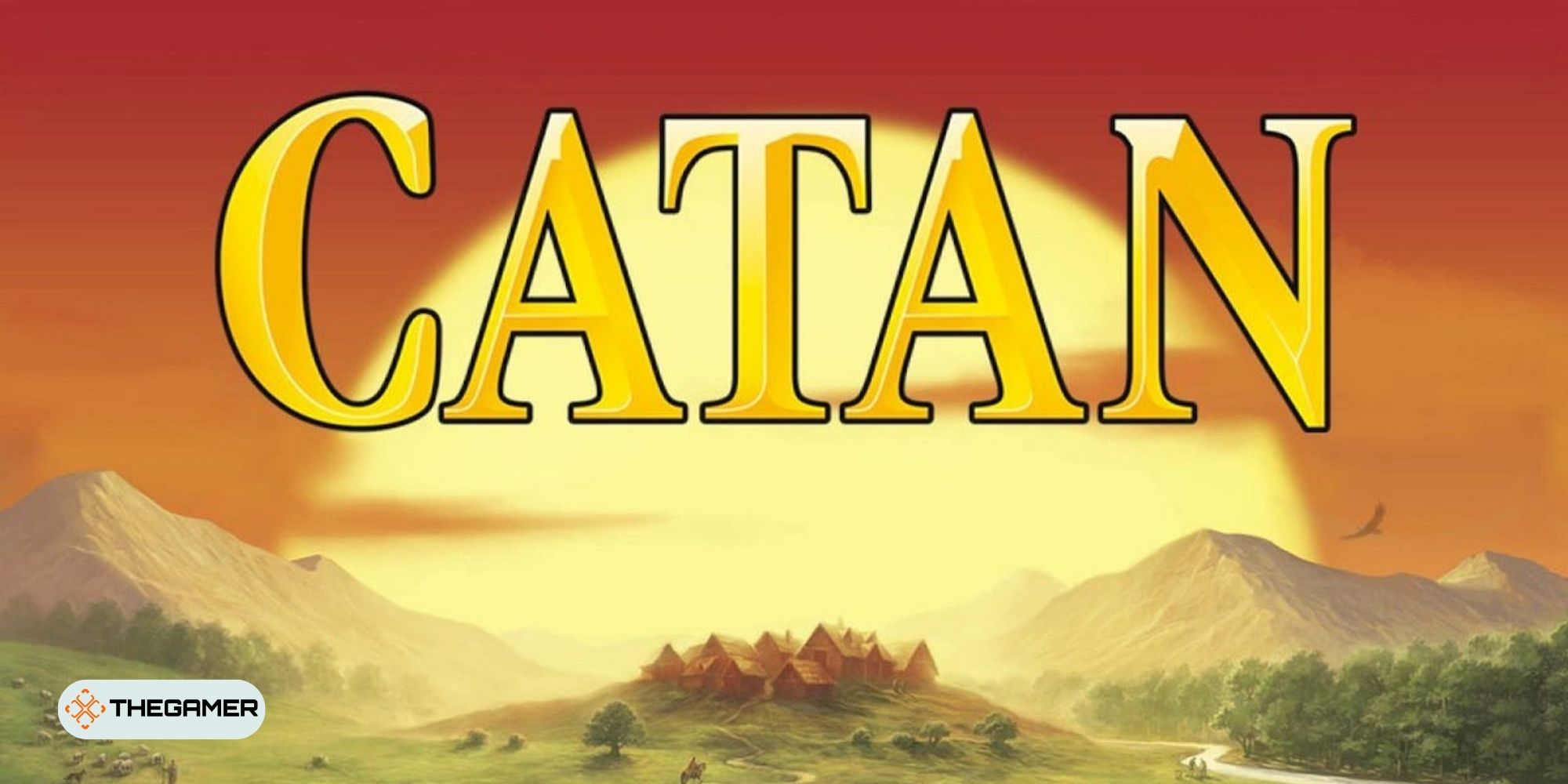
Ahoy there, ye landlubbers and seasoned Catan veterans! Welcome to the island of bountiful harvests, cutthroat negotiations, and enough sheep to knit a sweater for the whole archipelago. Here, the fiercest battles are fought with dice and cunning, not cannons and cutlasses. Every roll, every trade, every settlement placement is a chance to outsmart your rivals and claim your stake in this resource-rich paradise.
Whether you're a wide-eyed newbie or a grizzled Catan champion, there's always something new to learn on this island. We'll navigate the treacherous trade routes, decipher the secrets of resource monopolies, and unleash the power of well-timed development cards. So, grab a mug of our finest grog (or wheat juice, if you're feeling fancy), and let's embark on this Catan adventure together!
Catan Basics And Introduction
Now, before we hoist the sails into the deep waters of strategy, let's get our sea legs by understanding one of the best resource management games today.
Picture this:
A hexagonal isle teeming with wood, brick, wheat, sheep, and enough ore to forge a king's ransom. That's Catan, where we'll be battling it out for bragging rights and the coveted title of "Master of the Meeples." The goal? Reach 10 victory points, faster than a sheep on sugar.
You'll do this by planting your flag (or rather, your little house thing) on the land, claiming resource-rich hexes and building roads like cunning little ants. Each dice roll awakens the land, showering settlements with goodies based on their location. Wood for sturdy ships, brick for imposing fortresses, wheat for hearty feasts – you get the picture.
But here's the twist: you don't have Robinson Crusoe's island all to yourself. Other scurvy dogs are eyeing your land and resources. So, you'll need to barter and trade like a seasoned pirate captain, swapping sheep for wood to build that crucial trading post or wrangling a wheat deal to upgrade your shack into a city that makes the mermaids sing.
Unfurling The Scrolls Of Catan Strategy
Now that we've got the Catan basics seared into our brains, it's time to hoist the sails of strategy and chart a course toward victory.
Balanced Approach
This is the "steady wins the race" strategy. Picture yourself as a wise old sea captain, spreading your settlements across the land like a well-stocked pantry. You'll have a bit of everything – wood for sturdy ships, brick for imposing fortresses, and enough wheat to keep your crew happy. This way, you're not begging for scraps from every passing trader, but you might not be building cities as fast as the other buccaneers.
Resource-Focused Strategies
Now, for the thrill-seekers! Here, we pick a favorite bounty and go all in.
- Wood/Brick Blitz: Think of this as a "land grab" strategy. You'll be building roads like a spider weaving its web, snagging prime spots, and maybe even claiming that sweet "Longest Road" bonus. Just remember, your island hopping might leave you short on other goodies later, so be ready to switch gears when the time comes.
- Ore/Wheat Powerhouse: This is all about building cities that churn out resources like a magic well. You'll be rolling in dough (or rather, wheat) and beefing up your army with those shiny ore cards. Just be patient, matey, because it takes a while to get this engine going.
Specialized Strategies
Now, for the real sharks of Catan! These strategies are high-risk, and high-reward—like sailing through a hurricane with a barrel of gunpowder in your hold.
- Monopoly Mania: This is for the ruthless traders who want to control the market like a Kraken hoarding gold. Pick your favorite resource – sheep, wood, whatever floats your boat – and squeeze every drop of trade value out of it. Just remember, if you're too greedy, the other pirates might team up and sink your ship!
- Port Prowess: Picture yourself as the king of the harbor, with a fancy port that lets you trade like a pro. You might give up some early resources, but those sweet 2-for-1 and 3-for-1 deals will have you swimming in riches eventually. Just make sure you snag a good port early, or you might be stuck with a leaky bucket.
Mastering Settlement Placement
The foundation of a winning strategy in Catan lies in the strategic placement of your initial settlements. This critical decision impacts your resource flow and sets the tone for your game strategy. Here are key considerations for mastering settlement placement:
Resource Diversity
Aim to cover as many different resources as possible with your initial settlements to reduce dependency on trading for basic building needs. Having access to all resources isn't always feasible, so prioritize based on your chosen strategy (e.g., wood and brick for expansion, ore and wheat for city building).
Number Spread
Place settlements on hexes with a variety of numbers to ensure a more consistent flow of resources. Remember, numbers 6 and 8 are statistically more likely to roll than others, but don't underestimate the value of having a broader spread to cover more rolls.
Adjacent Numbers
Avoid placing settlements where two hexes share the same number. This setup makes you vulnerable to a single dice roll, potentially stalling your resource intake if that number doesn't come up.
Ports Access
Early access to a port can be a game-changer, especially if you're focusing on a specific resource. Ports allow for more favorable trading ratios, giving you flexibility in resource management. Consider placing a settlement near a port that complements your resource strategy.
Blocking and Expansion Potential
Consider the potential for future expansion when placing your initial settlements. Positioning yourself in a way that blocks competitors from prime locations or resources can be as valuable as securing those spots for yourself.
Development Cards: Your Secret Weapons
Development cards in Catan are potent tools, often tipping the scales in your favor when used strategically. They can be a bit of a gamble, as you don't know what you'll draw, but their potential benefits are too significant to ignore. Here's a breakdown of the types of development cards and strategies for using them effectively:
Types of Development Cards
Card Image
Description
Most common in the deck, knights allow you to move the robber and potentially protect your resources. Accumulating knights also puts you in contention for the "Largest Army" bonus, worth two victory points.
These cards are straightforward, each providing one hidden victory point. They bring you closer to winning and can be a pleasant surprise to your opponents when revealed.
They grant you two free road segments, crucial for expanding your reach on the board and contesting the "Longest Road" bonus.
This card offers you any two resources of your choice, great for completing a crucial build or trade.
They allow you to claim all of a specific resource from every player, a powerful move that can dramatically shift the resource balance.
Strategic Use of Development Cards
- Timing is Key: Hold onto your development cards for the right moment. For example, use a Monopoly card when you know a particular resource is abundant among players, or play a Knight card to shift the robber away from your key resource hex.
- Bluffing and Misdirection: The uncertainty of what you have in your development card stack can be used to your advantage. Keeping opponents guessing can deter them from certain actions, like placing the robber on your tiles.
- Balancing Development and Expansion: While development cards can be game-changers, don't neglect the importance of building settlements and cities. A balanced approach often works best.
- Surprise Factor: Use the hidden nature of development cards to your advantage. Keeping a Victory Point card secret can allow you to win unexpectedly, catching your opponents off guard.
Investment vs. Reward
Consider the cost of development cards (one ore, one wheat, and one sheep) against potential benefits. Early in the game, expanding your presence on the board might take precedence, but as the game progresses, development cards can offer significant strategic advantages.
The Art Of Handling The Robber
The robber is a unique element in Catan that can dramatically influence the game's flow. Effectively managing the robber involves both defensive and offensive strategies to protect your interests while potentially hindering your opponents.
Defensive Strategies
- Diversify Your Numbers: To minimize the impact of the robber, ensure your settlements aren't overly reliant on a single tile. If the robber blocks that tile, your resource flow could be severely disrupted.
- Use Knights Wisely: Knight cards allow you to move the robber off your critical resources. It's often wise to save knights for moments when the robber's presence severely impacts your resource intake.
- Build Around Less Targeted Tiles: While high-probability tiles (6s and 8s) are attractive for their resource yield, they're also robber magnets. Sometimes, placing settlements on slightly less probable tiles (5s and 9s) can reduce the frequency of robber visits.
Offensive Strategies
- Target Key Competitors: Use the robber to block resources crucial to your leading competitors, especially if it can prevent them from building a settlement, city, or buying a development card.
- Create Resource Scarcities: If you notice a particular resource is in short supply, placing the robber on that resource's tile can increase its scarcity, enhancing its value for trading.
- Psychological Warfare: The threat of moving the robber can be used to influence other players' actions, such as deterring them from building in certain areas or coercing them into more favorable trades.
Trading: The Key to Resource Management
In Catan, mastering the art of trading is essential for securing the resources you need to build your empire. Effective trading can accelerate your progress, while poor trades can hinder it.
Here are some strategies to enhance your trading prowess:
Fair Trades vs. Strategic Trades:
- Early Game: In the beginning, resources are often traded more freely to ensure all players can start building. Aim for fair trades that benefit both parties, keeping in mind your immediate building needs.
- Mid to Late Game: As the game progresses and players' strategies become clearer, trading becomes more strategic. Consider not just the immediate benefit but also how the trade will impact your position relative to others. Be wary of trades that could give competitors the resources they need to take the lead.
Using Ports to Your Advantage
Access to a 3-for-1 or even better, a 2-for-1 port, can significantly enhance your trading capabilities. If you find yourself with a surplus of a particular resource, a port can turn that surplus into any resource you need, reducing your dependency on other players.
Position your initial settlements with potential port access in mind, especially if you're aiming for a resource-heavy strategy.
Psychological Aspects of Trading
- Bluffing and Misdirection: Sometimes, what you offer or ask for in a trade can signal your intentions to others. Use this to your advantage by bluffing about your needs or future plans.
- Reciprocity and Relationships: Building a reputation as a fair trader can open up more opportunities for you in future trades. However, be prepared to be more ruthless when necessary, especially if it means securing a win.
When Not to Trade
There comes a point in every game of Catan where trading with a particular player might do more harm than good, especially if they're close to winning. Recognizing when to cut off trade relations to prevent an opponent from gaining an advantage is crucial.
Ultimately, success in Catan comes down to making informed decisions, adapting to the evolving game dynamics, and sometimes, a bit of luck. Keep these strategies in mind during your next game, and watch as your empire on Catan flourishes!
NextBoard Games Like Catan
If you're a fan of tabletop classic Catan, there are other, similar games that are pretty awesome. Try checking these out next.
Posts












